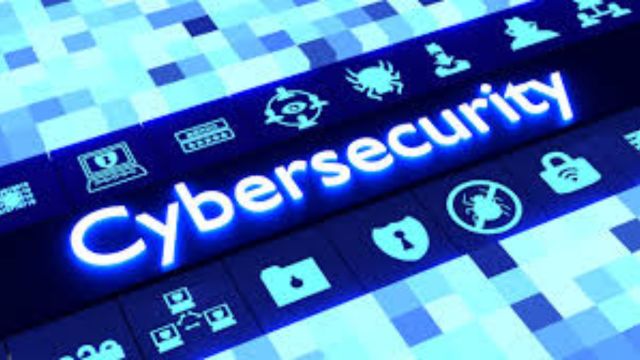Cybersecurity is becoming one of the most important pillars of a safe and functional society in a world that is becoming more and more digitally first. In the digital battlefield, everyone, from individual smartphone users to major multinational corporations and governments, is both a possible target and a potential defense. Nowadays, cybersecurity is a need rather than an option.
What Is Cybersecurity?

The practice of defending programs, networks, systems, and data against online threats is known as cybersecurity. These attacks usually seek to disrupt regular corporate activities, take advantage of infrastructure flaws, or access, alter, destroy, or extort sensitive data.
Threats increase in sophistication along with technology. Phishing emails, ransomware, malware, social engineering, and zero-day exploits are just a few of the methods hackers employ to get access to networks. As a result, cybersecurity has developed into a wide-ranging, multi-tiered field that includes data privacy, cloud security, application security, endpoint protection, and network security.
Why Cybersecurity Matters More Than Ever
The surface area for cyber attacks has increased dramatically as a result of the acceleration of digital transformation in all sectors:
- Remote work environments rely heavily on unsecured networks and personal devices.
- Cloud storage and SaaS platforms, while convenient, require continuous monitoring and protection.
- Smart devices (IoT) can be entry points for attackers if not configured securely.
- Healthcare, finance, education, and even public infrastructure are vulnerable to breaches that can cause massive disruptions.
The stakes are really high. A single successful cyberattack has the potential to destroy customer trust, cost a company millions of dollars, and even put lives in jeopardy when it comes to vital infrastructure or healthcare systems.
Key Areas of Cybersecurity
- Network security: Prevents breaches into internal networks by the use of intrusion detection systems (IDS), firewalls, and routine network monitoring.
- Application security: makes sure that programs and software are written safely to guard against flaws like cross-site scripting (XSS) and SQL injection.
- Information security: uses backup plans, access control, and encryption to protect the privacy and integrity of data while it’s in transit and storage.
- Cloud security: is the study of protecting information, programs, and services that are housed on cloud computing platforms. Identity management, encryption, and role-based access controls are all included.
- Endpoint security: is crucial in remote work settings because it protects user devices including desktops, laptops, and cellphones.
- Operational Security (OpSec): The procedures and choices pertaining to managing and safeguarding private information in the course of daily operations are referred to as operational security, or OpSec.
- Disaster Recovery and Business Continuity: Procedures and frameworks intended to swiftly return to regular operations following breaches or interruptions.
Common Threats in the Cyber Landscape
- Phishing assaults: Users are tricked into divulging personal or financial information via fraudulent emails or websites.
- Ransomware: is malicious software that prevents users from accessing their devices and demands money to unlock them.
- Denial of Service (DoS): Brings down websites or services by flooding a server with traffic.
- Man-in-the-Middle attacks: To steal data, hackers eavesdrop on conversations between two parties.
- Zero-day exploits: Attacks that take advantage of undiscovered flaws before patches are released are known as zero-day exploits.
Top Techniques for Increasing Cybersecurity
The following procedures will assist lower your risk, regardless of whether you’re an individual, small business owner, or employee of a major corporation:
- Use Strong Passwords: Combine letters, numbers, and symbols. Avoid using the same password across platforms.
- Enable Multi-Factor Authentication (MFA): Adds an extra layer of security beyond just passwords.
- Regular Software Updates: Keep all applications and systems up to date to patch known vulnerabilities.
- Backup Data Frequently: Use offline or encrypted cloud backups to ensure data recovery after an attack.
- Train Employees: Human error is often the weakest link. Regular training helps recognize phishing and other social engineering tactics.
- Use Trusted Antivirus & Firewalls: These serve as your first line of defense.
- Monitor Network Activity: Use monitoring tools to detect unusual traffic or access attempts.
The Function of Institutions and Governments
Although everyone has a role to play, cybersecurity is also a group effort. Governments must invest in cyber defense infrastructure, create national cybersecurity strategies, and enforce data protection laws. It is recommended that organizations adopt a “security by design” strategy, which involves integrating security into their operations from the very beginning.
International collaboration is also essential. Since cybercrime has no geographical boundaries, international cooperation through institutions like INTERPOL, ITU, and regional cybersecurity frameworks is crucial for quickly identifying and addressing threats.
Conclusion: Cybersecurity Is Everyone’s Responsibility
Cybersecurity is just as important as physical security in the current digital era. Systems operating safely in the background are essential to every click, login, and online transaction. To safeguard the things we value most—data, trust, and human safety—we must also create a strong digital barrier as we develop increasingly integrated services and technology.
Whether you work in technology, are a student, or manage your own company, it is not only prudent but also essential to comprehend and invest in cybersecurity.
Stay informed and secure in the digital era. Explore expert insights, updates, and resources on cybersecurity, digital infrastructure, and innovation. Join Digital India MIB in building a smarter, safer future. Start your journey today — because digital empowerment begins with awareness and action.













